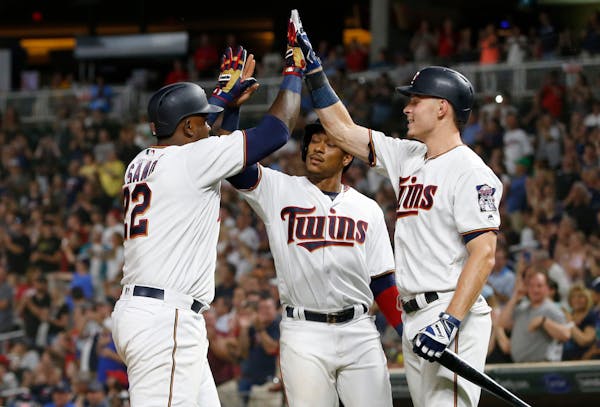The defining moment of Rod Carew's 1977 MVP season came in a shootout against the Chicago White Sox in late June. Carew collected four hits and six RBI to raise his batting average to .403, drawing multiple standing ovations from the raucous crowd of 46,000 at Met Stadium.
Twins 19, White Sox 12, and Carew's performance was noteworthy for something else: zero strikeouts.
That game fell during a stretch of 16 consecutive games in which Carew did not strike out. Not once, in 73 plate appearances.
"It was the worst at-bat when I struck out because it was a long walk back to the dugout, dragging my bat," Carew said by phone this week. "I hated that."
I called Carew to talk hitting, but also to vent. This avalanche of strikeouts in baseball, and by the Twins specifically, is driving me bonkers.
"Me too," Carew said.
His former team has become flagbearer of the whiff parade. Four years after setting a major league record for home runs, the Twins are on pace to set a new mark for strikeouts.
The Twins had a league-high 625 strikeouts entering Wednesday's game. They average 10-plus whiffs per game, putting them on track to break the Chicago Cubs' record of 1,596 set two summers ago.
Interestingly, the Twins don't have a single hitter ranked in the top 30 in strikeouts, which means they are chasing infamy as a group.
Twenty-seven percent of the team's plate appearances end in a strikeout. Not quite a Sanó-esque ratio, but still alarming. Something is seriously wrong, whether it's approach, plate discipline, coaching or a combination of those factors.
The Twins make striking out look comically routine.
Modern baseball offers far more acceptance of strikeouts than previous generations. That walk of shame back to the dugout has been replaced by indifference as strikeout rates soar.
Carew has a few theories on the root problem.
"You don't see hitters tracking the ball anymore once the pitcher releases the ball," he said. "Most of them are guessing. A lot has to do with the analytics part. Everybody is trying to pull. They're trying to hit the ball in the air."
Carew never struck out 100 times in a season. He registered only 55 strikeouts in 694 plate appearances in his MVP season.
"The game is different today," he said. "Everybody is trying to hit the ball out of the ballpark, even the guys who can't hit home runs. I would rather hit 10 ground balls and have them go through the hole than swing at 10 pitches up in the zone and not able to catch up with it and end up striking out and giving an at-bat away."
There also is a correlation to changes in pitching philosophy. Starters threw fewer innings and bullpens are loaded with flamethrowers. Carew shared a story about his battles with the all-time strikeout king, Nolan Ryan.
Of Ryan's 5,714 career strikeouts, 29 came against Carew, which was fourth most on the list.
"But I ended up hitting .300 off him," said Carew (.301 to be exact).
Carew came up with a unique idea to train himself to lay off Ryan's sizzling fastball up in the zone. He took extra batting practice sitting on a stool that swivels before facing Ryan.
"My approach was to see the pitch and know that I shouldn't go up to try and hit that pitch because there wasn't much more that I could do with it," he said. "For about two weeks or so, I sat on that stool and took batting practice. It helped me to stay down and not chase his fastball up."
He had better success against Ryan after that. One game, Ryan barked at him to stand up as Carew crouched in his stance.
"You have to learn to make adjustments," Carew said.
The lack of adjustments and infatuation with launch angle frustrates Carew. He also believes an inconsistent strike zone is contributing to high strikeout rates.
"I don't think the umpires are doing these guys any justice," he said.
In 1977, Carew's MVP season, only one team reached 1,000 strikeouts. All 30 teams surpassed that mark last season.
Carew noted somewhat sarcastically that his approach as a hitter "doesn't count anymore" in modern baseball.
"Unless you hit a lot of home runs and strike out 180 or 190 times," he said, "I guess that's better."

Timberwolves push back in OT, top Kings despite Fox's 60 points

Falvey's baseball-and-biz assignment is rare, but he's seen it done

For the Wild, the Central is central indeed


